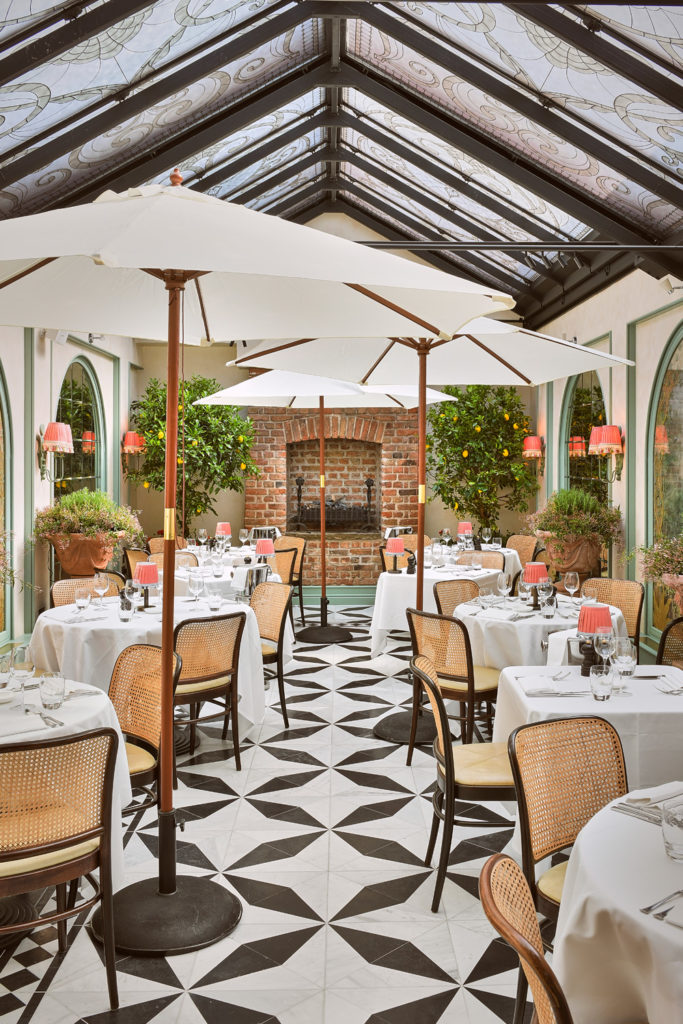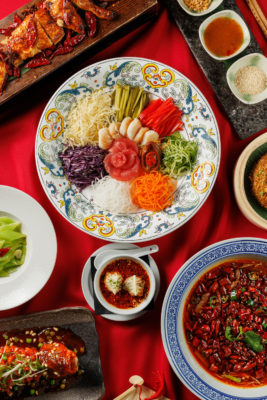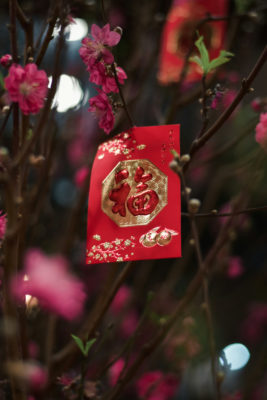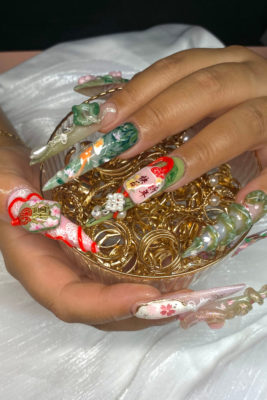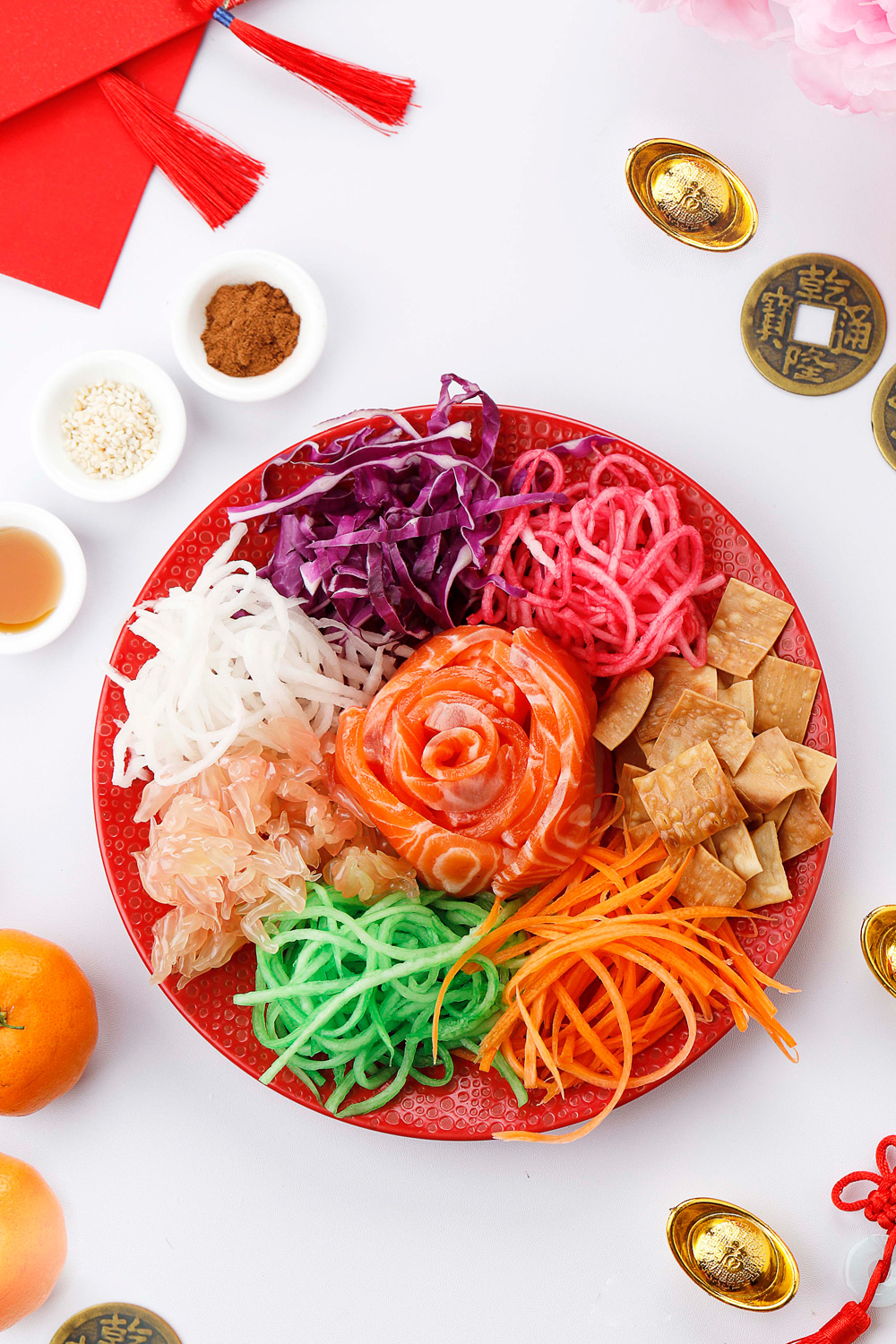
5 Lunar New Year Dishes To Bring Good Luck For 2025
By
3 months ago
Eat your way to prosperity
Lunar New Year falls on 29 January this year, marking the beginning of the Year of the Snake. Also known as the Spring Festival, it’s the most important holiday in China, but celebrations take place all over the world in places like Vietnam, Singapore, Malaysia and Korea, as well as here in the UK. Food is central to the festivities, with specific dishes served to bring good fortune for the year ahead – and others avoided as they’re believed to be unlucky. Whether you’re hosting a special dinner or just fancy a prosperous 2025 (don’t we all), here are five traditional Lunar New Year dishes to have on your radar.
Which Foods Are Eaten On Lunar New Year?
Prosperity Toss Salad
Also known as yee sang, prosperity salad is a popular Lunar New Year dish. This isn’t your average salad: recipes usually include numerous ingredients, such as shredded vegetables, sweet potato, chicken or fish, ginger and peanuts, resulting in a colourful and tasty mix. So where does the good luck come from here? Well, there’s an entire ritual dedicated to the prosperity salad. Typically, everyone gathers round the table as each ingredient is added, then the dish is dramatically tossed with chopsticks while shouting ‘lo hei!’ (scoop it up). The higher you toss, the greater your fortunes will be.
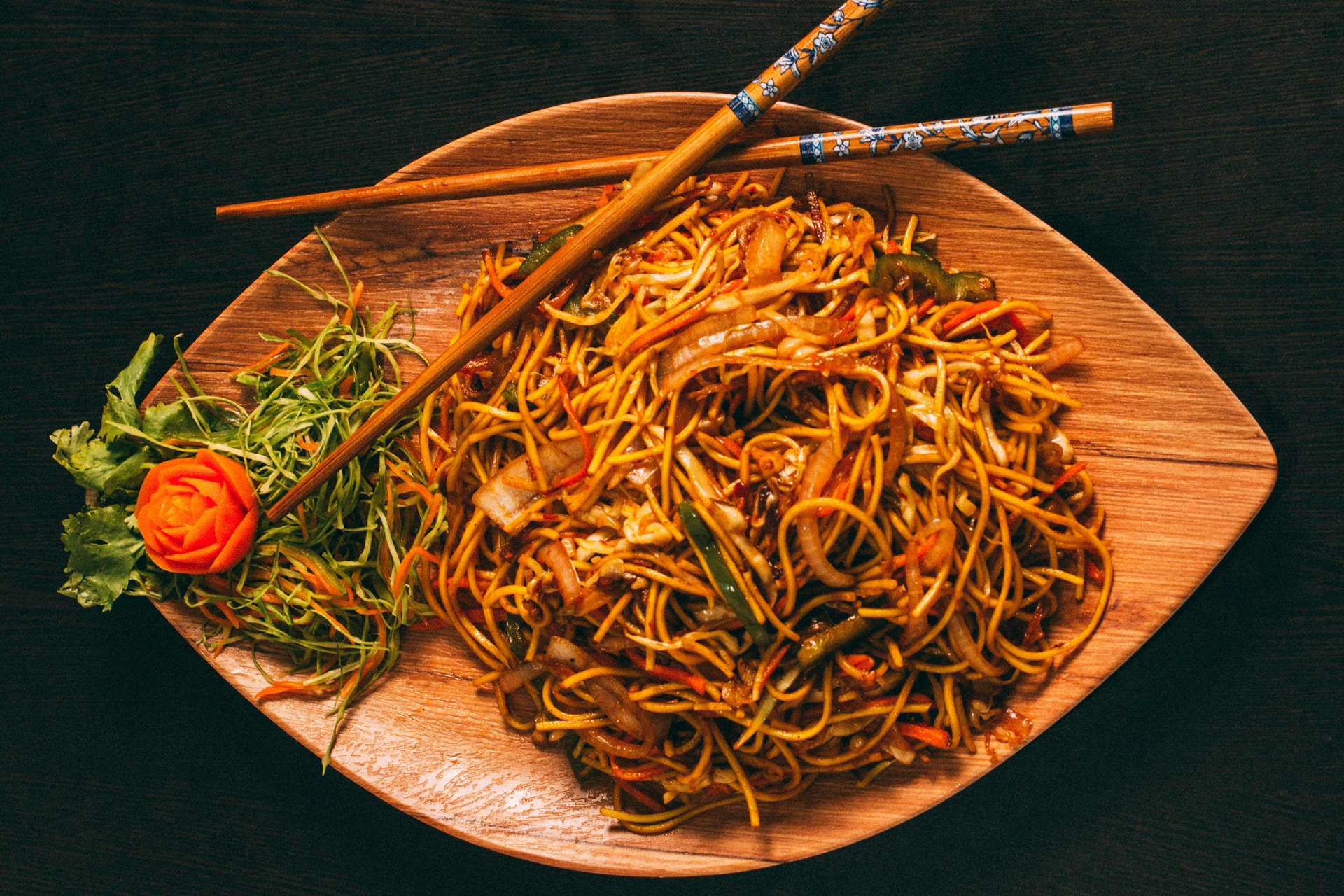
Unsplash
Longevity Noodles
One of the most common Lunar New Year dishes is longevity noodles, thought to symbolise long life. Like many food traditions, the origins of the dish are contested, but one popular story traces the noodles back to Emperor Wu of the Han Dynasty, who is often credited with starting the custom. There are many versions: some chefs season lo mein noodles and toss them with ingredients like water chestnuts, snow peas and mushrooms, while other recipes top the dish with a lobster. However, it’s widely agreed that the dish must be approached carefully: as legend goes, the chef must not cut the noodle strands, and each strand should be eaten whole. The longer the noodle, the more likely you are to remain safe and lucky for the year ahead.
Dayu Darou
Many Lunar New Year celebrations are not complete without dayu darou, which translates as ‘big fish and big meat’. Served as a centrepiece to the meal, these not only look impressive on the dining table, they also represent abundance and family unity. In China, often a whole fish such as carp or trout is steamed and served with a simple soy sauce – but there are some things to be careful of when you’re serving. Never point the tail at any person, or flip the fish, as both of these are considered bad luck.
A whole chicken is also a popular dish, served in a variety of ways. In Vietnamese culture, it tends to be roasted or stuffed, while in southern China the chicken will usually be steamed or boiled and served with a ginger-scallion sauce, symbolising simplicity and purity.
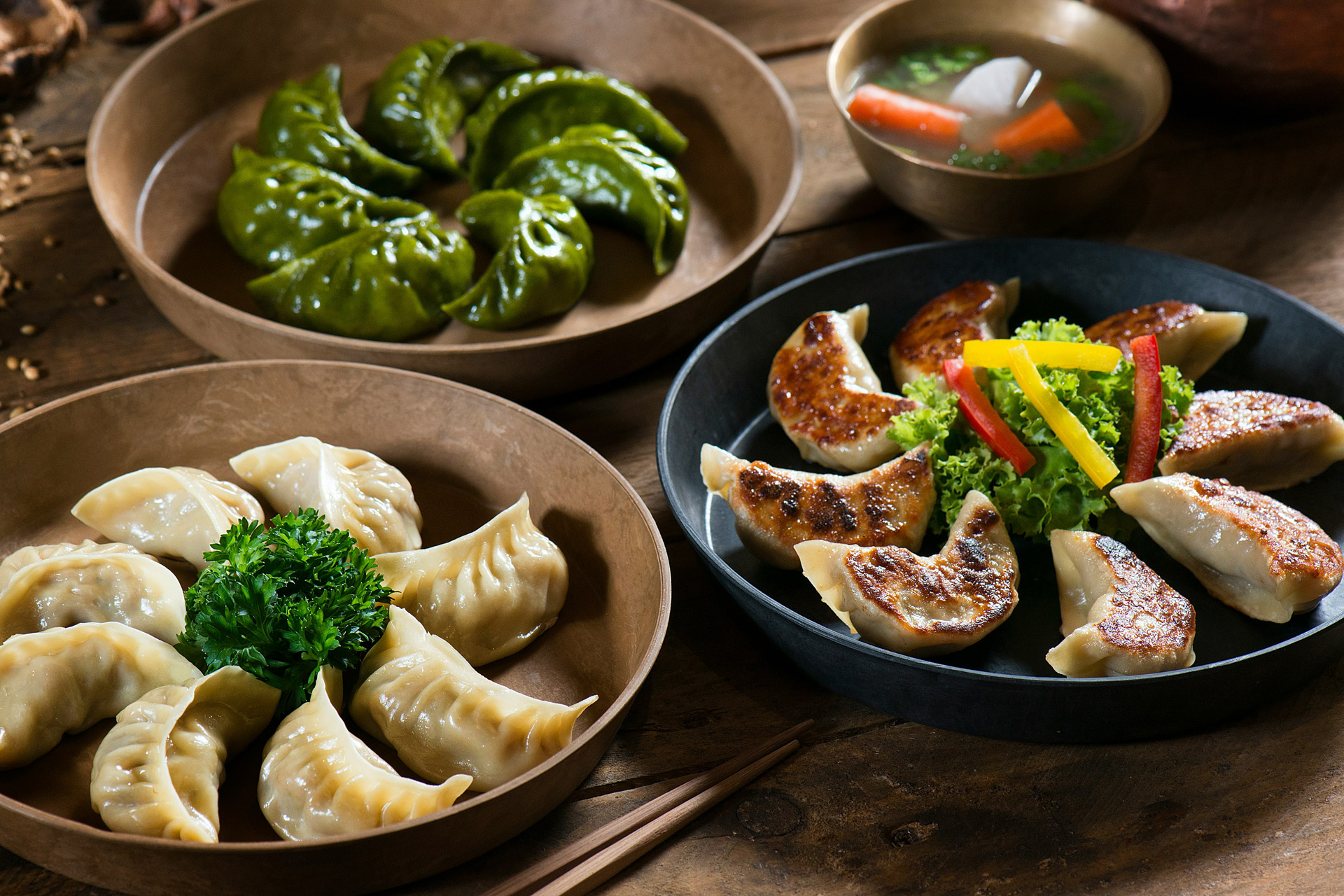
Unsplash
Dumplings
Dumplings are another staple Lunar New Year dish, often shaped like ancient Chinese gold or silver ingots (Chinese coins) – a symbol of wealth. The ritual of making them is a significant part of many families’ festivities, bringing everyone together for a common purpose, and they’re perfect for sharing in big groups. The dumplings are usually filled with meat, fish or veggies, and sometimes a coin is hidden inside one, with the lucky person who finds it destined for a year of good fortune (similar to the galette de rois cake in France).
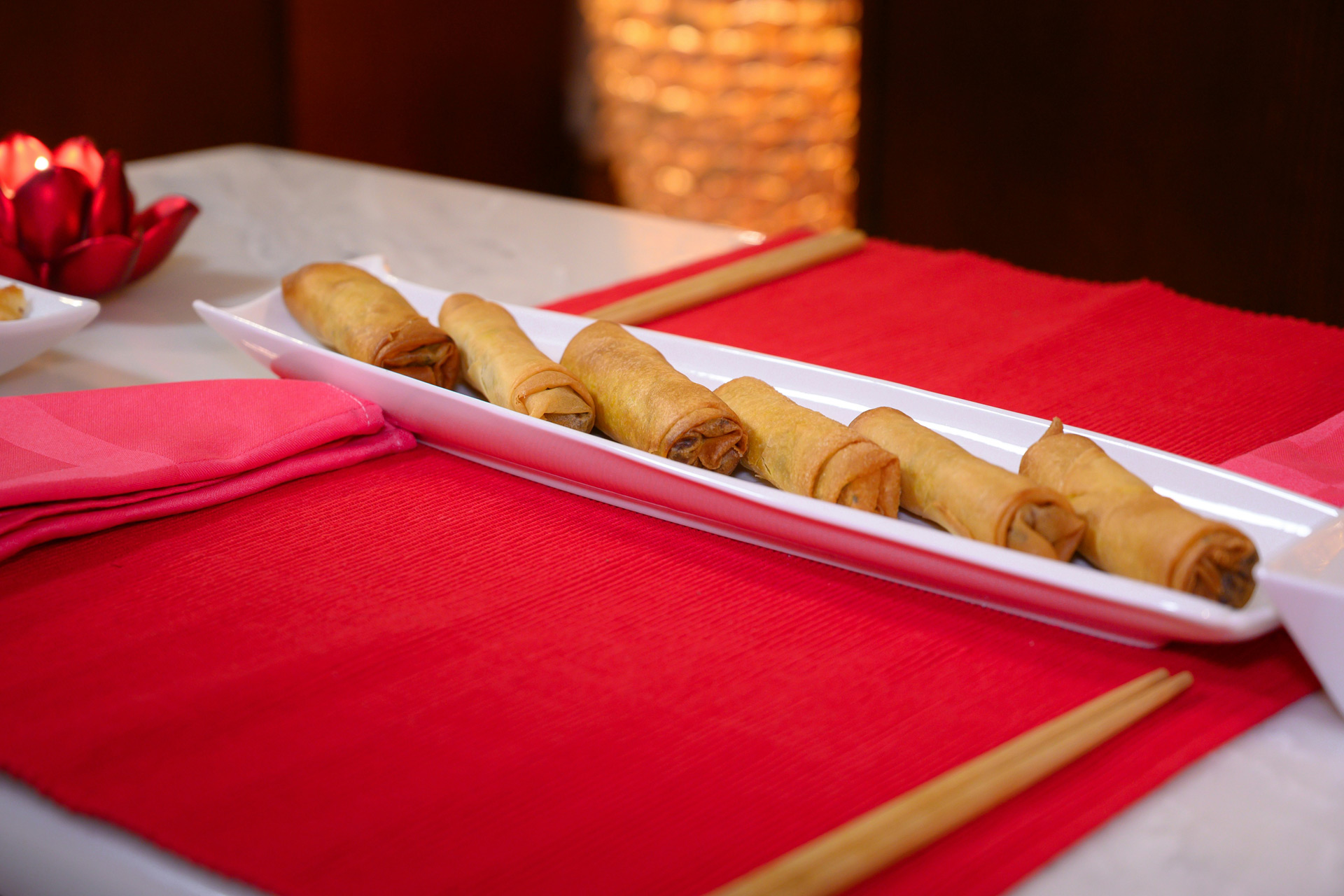
Unsplash
Spring Rolls
Spring rolls, or chun juan, get their name from the holiday in which they’re usually enjoyed, the Spring Festival. Crisp and golden, they’re viewed as bars of gold which will bring wealth in the year ahead. Like dumplings, they’re often made together, with many families having their own recipes which are passed on through generations. Particularly popular in China and Vietnam, the rolls are usually filled with meat, fish or veggies, deep-fried and served with sauces like soy and sweet chilli.
Which Foods Should You Avoid On Lunar New Year?
When it comes to good luck, what you don’t eat on Lunar New Year is just as important as what you do eat. Some common superstitions are:
- Avoid white foods: In Chinese culture, white foods are often avoided as white is thought to symbolise death – so no tofu, eggs, rice or cauliflower.
- Twos are better than one: Many families make a conscious effort to have an event number of dishes on the table, and particularly take care to avoid having seven plates, which is believed to be unlucky along with the number 11.
- Watch out for hollow bread: Be careful when slicing your toast: finding a big air pocket in your bread is said to be an omen for bad luck, particularly on New Year’s. However, if the bread is round you’re apparently exempt from the rule.


